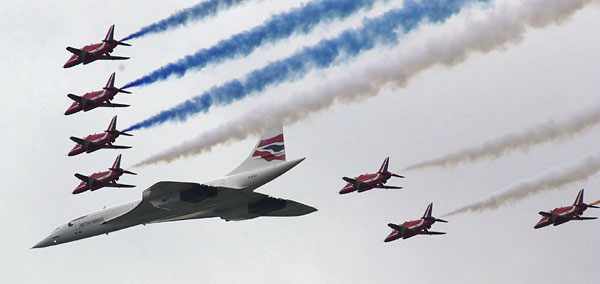|
Faces Of War Memorial
Faces of War Memorial is a Vietnam War memorial located in Roswell, Georgia, in the United States. It is located on the grounds of Roswell City Hall and was dedicated on Memorial Day on May 29, 1995. The monument has a height of and a width of . The monument is made of brick enclosing a sculpted bronze centerpiece topped with a capstone made of Georgia marble. The bronze-cast centerpiece depicts a soldier reaching for the outstretched hand of a small girl, surrounded by background of fifty faces, all variously displaying a range of emotions. A thin cascade of water flows over the faces from the top of the monument. A Memorial Day ceremony is held annually at the Faces of War Memorial which began in 1998, though it was not held in 2020 due to the COVID-19 pandemic. Roswell's annual Memorial Day ceremony is the largest Memorial Day event in the state of Georgia. The monument was designed by local architect Zachary Henderson, and the bronze-cast centerpiece of the monument was s ... [...More Info...] [...Related Items...] OR: [Wikipedia] [Google] [Baidu] |
Roswell, Georgia
Roswell is a city in northern Fulton County, Georgia, United States. At the official 2010 census, the city had a population of 88,346. The 2020 estimated population was 94,884, making Roswell the state's ninth largest city. A close suburb of Atlanta, Roswell has an affluent historic district. History In 1830, while on a trip to northern Georgia, Roswell King passed through the area of what is now Roswell and observed the great potential for building a cotton mill along Vickery Creek. Since the land nearby was also good for plantations, he planned to put cotton processing near cotton production. Toward the middle of the 1830s, King returned to build a mill that would soon become the largest in north Georgia – Roswell Mill. He brought with him 36 African slaves from his own coastal plantation, plus another 42 skilled carpenter slaves bought in Savannah to build the mills. The slaves built the mills, infrastructure, houses, mill worker apartments, and supporting buildings f ... [...More Info...] [...Related Items...] OR: [Wikipedia] [Google] [Baidu] |
Flypast
A flypast is a ceremonial or honorific flight by an aircraft or group of aircraft. The term flypast is used in the United Kingdom and the Commonwealth. In the United States, the terms flyover and flyby are used. Flypasts are often tied in with Royal or state events, anniversaries, celebrations - and occasionally funerary or memorial occasions. Sometimes flypasts occur in special situations, to honour someone or to celebrate certain types of aircraft. They have affinities with parades, of which they form the aerial component. Often they occur in purely display contexts at airshows, but it is the flypasts linked with civic, ceremonial and national pride, that imprint themselves on a nation's memory. Some flypasts have been described in broadcast and print media as "historic". Flypasts are regularly featured in public and ceremonial life in the United Kingdom, where they function as a particular kind of aerial salute. They serve to show respect, display aircraft, showcas ... [...More Info...] [...Related Items...] OR: [Wikipedia] [Google] [Baidu] |
Bronze Sculptures In Georgia (U
Bronze is an alloy consisting primarily of copper, commonly with about 12–12.5% tin and often with the addition of other metals (including aluminium, manganese, nickel, or zinc) and sometimes non-metals, such as phosphorus, or metalloids such as arsenic or silicon. These additions produce a range of alloys that may be harder than copper alone, or have other useful properties, such as strength, ductility, or machinability. The archaeological period in which bronze was the hardest metal in widespread use is known as the Bronze Age. The beginning of the Bronze Age in western Eurasia and India is conventionally dated to the mid-4th millennium BCE (~3500 BCE), and to the early 2nd millennium BCE in China; elsewhere it gradually spread across regions. The Bronze Age was followed by the Iron Age starting from about 1300 BCE and reaching most of Eurasia by about 500 BCE, although bronze continued to be much more widely used than it is in modern times. Because historical artworks were ... [...More Info...] [...Related Items...] OR: [Wikipedia] [Google] [Baidu] |

